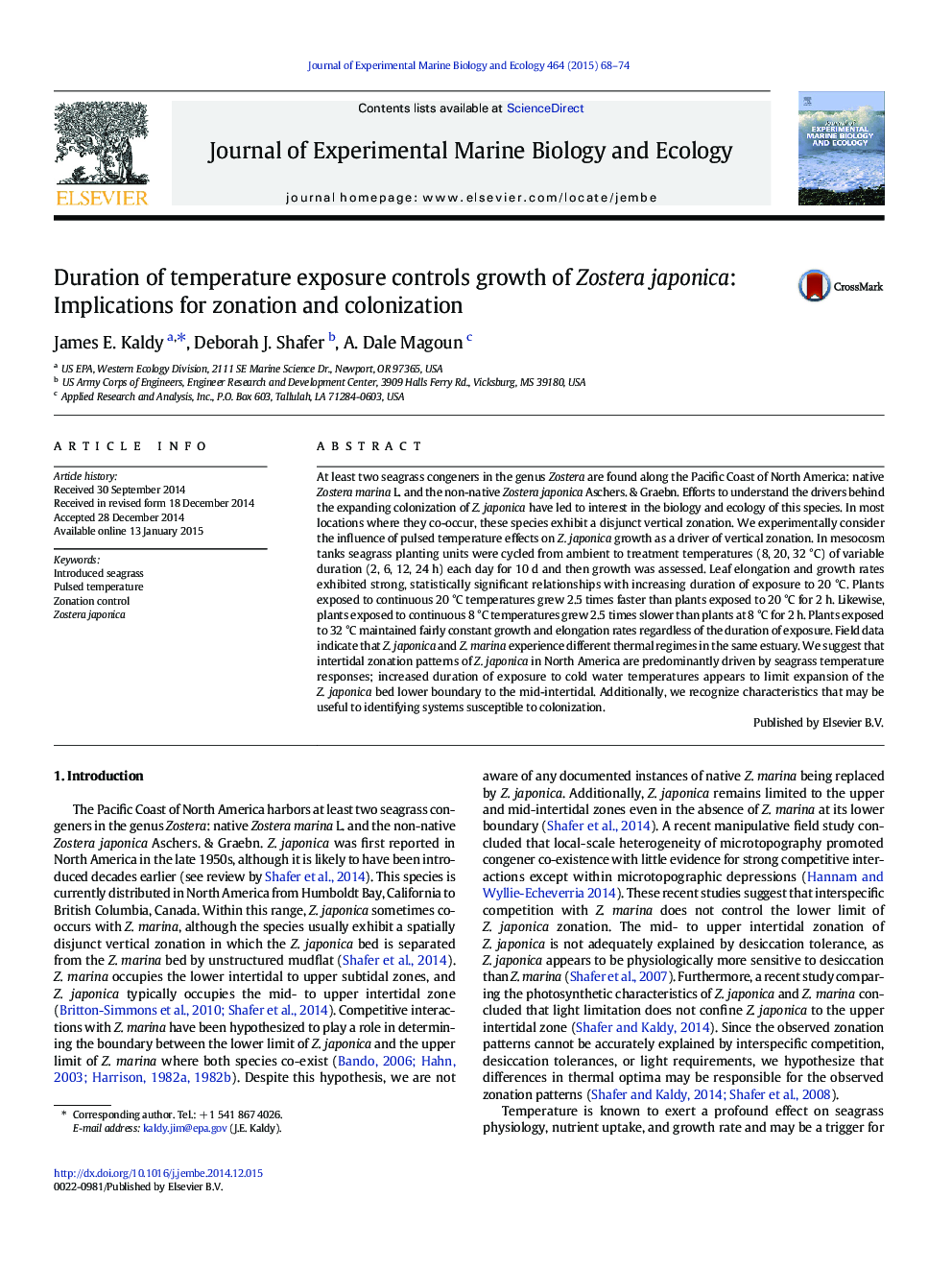| کد مقاله | کد نشریه | سال انتشار | مقاله انگلیسی | نسخه تمام متن |
|---|---|---|---|---|
| 4395458 | 1618411 | 2015 | 7 صفحه PDF | دانلود رایگان |

• Experimentally expose Z. japonica to pulsed temperature events
• Duration of exposure to temperatures strongly influenced growth rates.
• Z. japonica and Z. marina experience different thermal regimes in the same estuary.
• Duration of exposure to cold water may limit Z. japonica to the upper intertidal.
• Identify characteristics of systems susceptible to colonization
At least two seagrass congeners in the genus Zostera are found along the Pacific Coast of North America: native Zostera marina L. and the non-native Zostera japonica Aschers. & Graebn. Efforts to understand the drivers behind the expanding colonization of Z. japonica have led to interest in the biology and ecology of this species. In most locations where they co-occur, these species exhibit a disjunct vertical zonation. We experimentally consider the influence of pulsed temperature effects on Z. japonica growth as a driver of vertical zonation. In mesocosm tanks seagrass planting units were cycled from ambient to treatment temperatures (8, 20, 32 °C) of variable duration (2, 6, 12, 24 h) each day for 10 d and then growth was assessed. Leaf elongation and growth rates exhibited strong, statistically significant relationships with increasing duration of exposure to 20 °C. Plants exposed to continuous 20 °C temperatures grew 2.5 times faster than plants exposed to 20 °C for 2 h. Likewise, plants exposed to continuous 8 °C temperatures grew 2.5 times slower than plants at 8 °C for 2 h. Plants exposed to 32 °C maintained fairly constant growth and elongation rates regardless of the duration of exposure. Field data indicate that Z. japonica and Z. marina experience different thermal regimes in the same estuary. We suggest that intertidal zonation patterns of Z. japonica in North America are predominantly driven by seagrass temperature responses; increased duration of exposure to cold water temperatures appears to limit expansion of the Z. japonica bed lower boundary to the mid-intertidal. Additionally, we recognize characteristics that may be useful to identifying systems susceptible to colonization.
Journal: Journal of Experimental Marine Biology and Ecology - Volume 464, March 2015, Pages 68–74